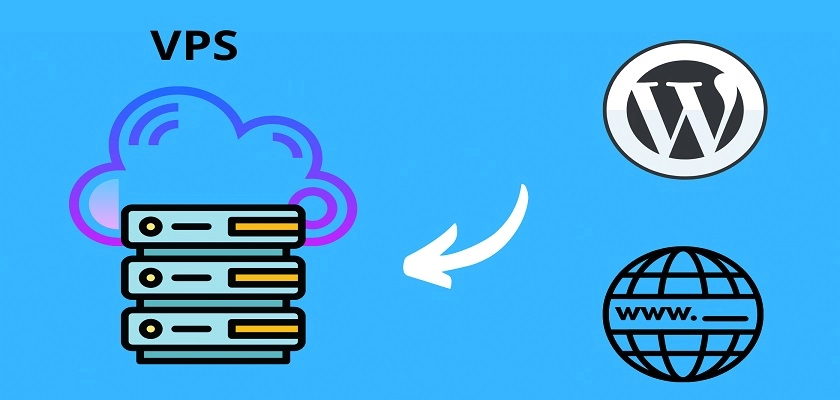How Many Users Can Use VPS? What Resources Do I Need to Run a VPS Hosting?

Virtual Private Server (VPS) hosting is a type of web hosting service that provides users with a virtual machine environment that emulates a dedicated server. It allows users to have more control over their hosting environment while sharing resources with other users. VPS hosting is popular among businesses and individuals who require more control, flexibility, and resources than traditional shared hosting can provide. In this article, we will explore how many users can use malaysia vps and what resources are needed to run a VPS hosting.
How Many Users Can Use VPS?
The number of users who can use a VPS depends on the resources available and the level of usage. VPS hosting provides a more isolated environment than shared hosting, but resources are still shared among multiple users. The number of users who can use a VPS depends on the amount of CPU, RAM, and storage space available.
The amount of CPU allocated to a VPS determines how many users can use it. CPU is the processing power of the server that runs applications and executes tasks. A VPS with a higher CPU allocation can handle more users and applications than a VPS with a lower CPU allocation.
The amount of RAM allocated to a VPS also affects the number of users who can use it. RAM is the temporary memory used to store data while an application is running. The more RAM a VPS has, the more users and applications it can handle simultaneously.
The storage space allocated to a VPS is another factor that determines how many users can use it. Storage space is the amount of disk space available for storing files, databases, and other data. A VPS with more storage space can accommodate more users and data than a VPS with less storage space.
The number of users who can use a VPS also depends on the level of usage. A VPS with heavy usage will require more resources than a VPS with light usage. Heavy usage includes running resource-intensive applications, serving a large number of visitors, or handling a high volume of traffic.
In summary, the number of users who can use a VPS depends on the resources available and the level of usage. The more CPU, RAM, and storage space a VPS has, the more users it can handle. A VPS with heavy usage will require more resources than a VPS with light usage.
What Resources Do I Need to Run a VPS Hosting?
Running a VPS hosting requires resources such as CPU, RAM, storage space, and bandwidth. The amount of resources needed depends on the number of VPS instances, the level of usage, and the type of hosting.
CPU
The CPU is the processing power of the server that runs applications and executes tasks. The amount of CPU needed depends on the number of VPS instances and the level of usage. A server with a higher CPU allocation can handle more VPS instances and higher usage levels.
RAM
RAM is the temporary memory used to store data while an application is running. The amount of RAM needed depends on the number of VPS instances and the level of usage. A server with more RAM can accommodate more VPS instances and higher usage levels.
Storage Space
Storage space is the amount of disk space available for storing files, databases, and other data. The amount of storage space needed depends on the number of VPS instances and the amount of data being stored. A server with more storage space can accommodate more VPS instances and more data.
Bandwidth
Bandwidth is the amount of data that can be transferred between the server and the internet. The amount of bandwidth needed depends on the number of VPS instances, the level of usage, and the amount of traffic. A server with more bandwidth can accommodate more VPS instances, higher usage levels, and more traffic.
In addition to these resources, running a forex ea also requires a reliable network, backup and security measures, and a management system.
Network
A reliable network is essential for running a VPS hosting. A network outage or slow connection can lead to downtime and negatively affect the performance of VPS instances. To ensure a reliable network, a server should have multiple network connections and redundancy.
Backup and Security Measures
Backup and security measures are critical for protecting data and ensuring business continuity. A VPS hosting should have a backup and disaster recovery plan in place to prevent data loss in case of a hardware or software failure. Security measures such as firewalls, SSL certificates, and malware scanning should also be implemented to protect against cyber attacks and data breaches.
Management System
A management system is necessary for managing and maintaining VPS instances. A control panel, such as cPanel or Plesk, can simplify the management of VPS instances by providing an easy-to-use interface for managing domains, databases, email accounts, and other settings. An automated system for monitoring and updating software can also help ensure VPS instances are secure and up-to-date.
Conclusion
VPS hosting is a popular choice for businesses and individuals who require more control, flexibility, and resources than shared hosting can provide. The number of users who can use a VPS depends on the resources available and the level of usage. The more CPU, RAM, and storage space a VPS has, the more users it can handle. Running a VPS hosting requires resources such as CPU, RAM, storage space, and bandwidth, as well as a reliable network, backup and security measures, and a management system. By understanding the resources needed to run a VPS hosting, businesses and individuals can make informed decisions about their hosting needs and ensure their VPS instances perform optimally.


